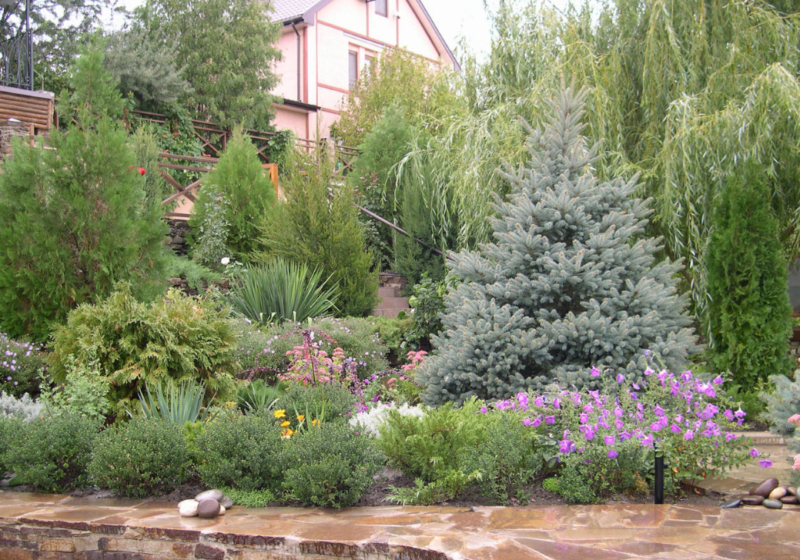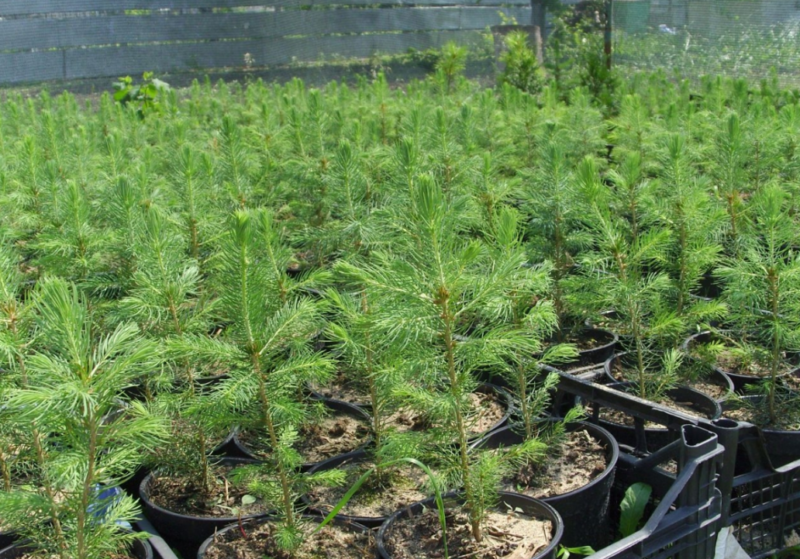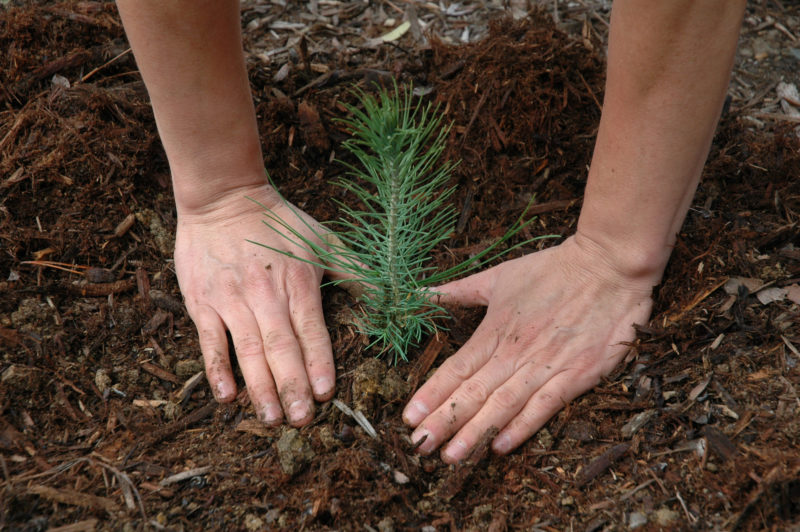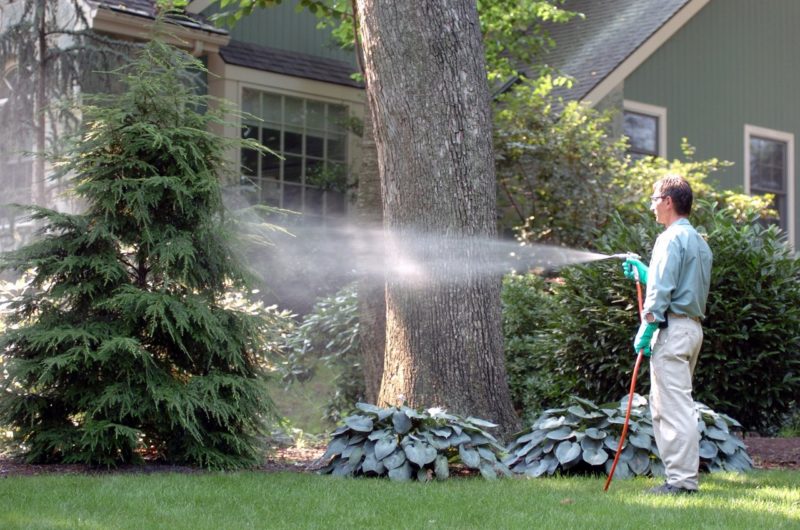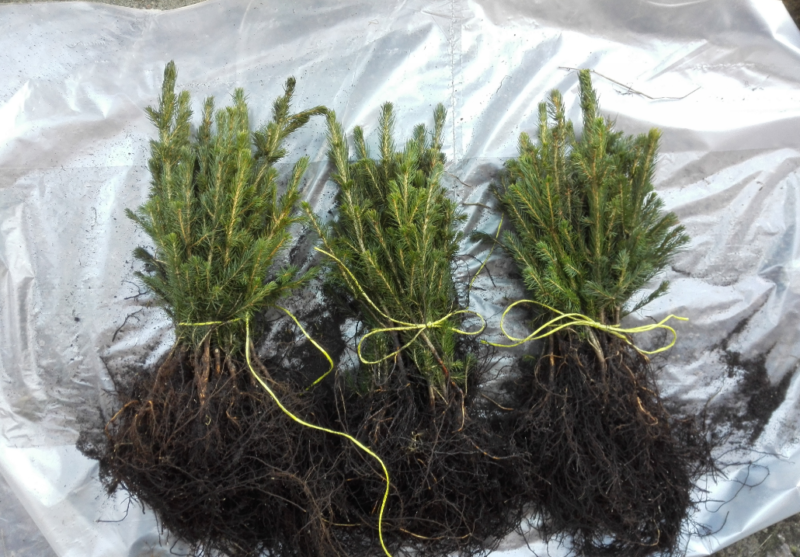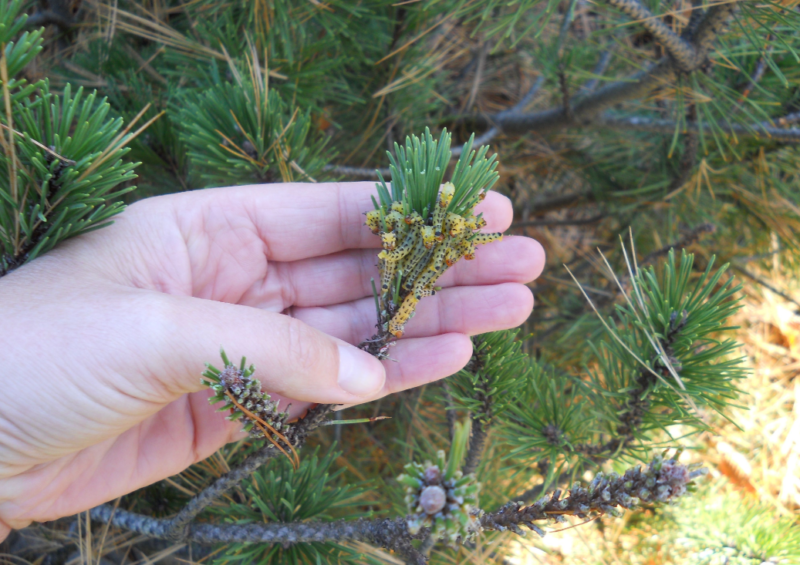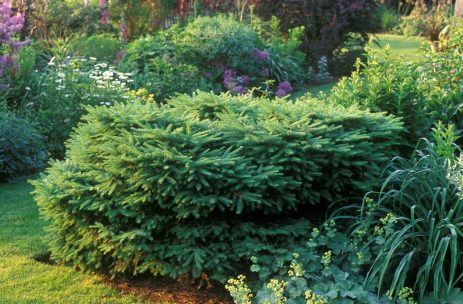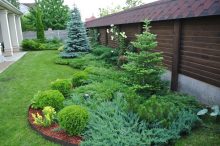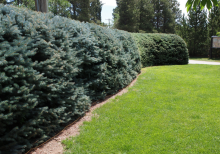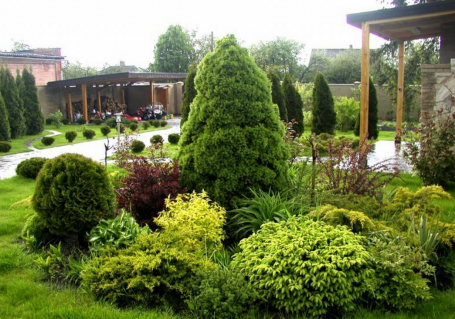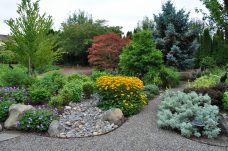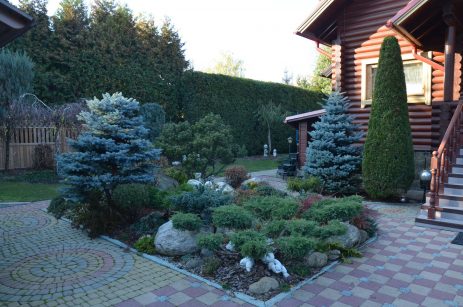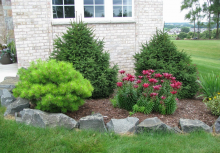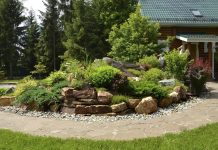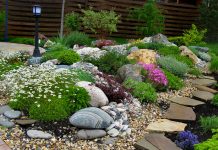The Christmas decoration of many houses is an ordinary spruce, which can forever settle on a personal plot. It will decorate the garden and purify the air, filling it with a life-giving coniferous aroma. In the first time after planting, the tree develops slowly, it needs care and care.
Material Content:
Characteristics and description of the plant
The description of the species of common spruce in nature indicates that it grows up to 40 meters. This is a big and beautiful tree. Branches initially grow horizontally, but grow old, wilt, leaning toward the ground.
The needles are flat, tetrahedral, slightly flattened, about 20 mm in length. They grow on shoots in a spiral. The life span of one needle is about 6 years, in a polluted area - two times less.
Fir cones ripen in the fall once every few years. They have an ovoid or oblong, oval shape. Seeds fall out in the snow from January to March. If they are not eaten by forest animals, they will give life to new trees.
The color of the bark is initially brown, then with a grayish tint with exfoliating plates. The wood is light and soft, it is used in construction, as well as in industry for paper and pulp. Needles, immature cones, seeds and buds are used in folk medicine for the preparation of medicinal infusions and decoctions.
The root system of spruce is superficial. Therefore, tall specimens are not customary to plant near the house.
During strong winds, huge trunks, uprooted, can fall on the roof and destroy the building.
Types and varieties of common spruce
This is the only native species that grows in central Russia, which belongs to the genus of spruce, the family Pine. Currently, breeders have bred many interesting varieties. For example, ordinary spruce Nidiformis is a dwarf tree with a dense light green crown growing in the form of a nest, the diameter of an adult plant is about 1 m, height - 50 cm. Annual growth is about 2 cm.
Other varieties:
- Little Jam is a small dwarf spruce with a dense, light green spherical crown.
- "Maxveli" is a miniature tree about a meter high. The shoots are short, the crown is dense, pyramidal, up to 2 m in diameter. The cones are very small, almost imperceptible.
- "Wils Zwerg" is a compact cone-shaped tree with a short light-green needles of a yellowish hue. It grows slowly (2-3 cm per year).
- "Evergold" - an adult tree has a height of up to 20 m. Young shoots with golden needles.
Ordinary spruce "Push", which at 10 years old does not exceed 60 cm, attracts attention not only with its small size, but also with unusual cones of pink-purple color. Before buying a grade of ordinary spruce, you need to find out what size and shape an adult tree will be. This will help make the right choice.
Where to get a spruce for planting
Saplings of different varieties of spruce can be found in the nursery, where the trees are sold with a closed root system, planted in containers. When choosing, pay attention to the buds located on the tops of the shoots. They should not be dry.
You can grow seedlings yourself from seeds, cuttings or layering.
The slowest way is seed propagation: full seedlings will be obtained only 3-4 years after sowing.
It is not worth digging out a fir tree in the forest, if this is done without the permission of the forestry, the seedling will cost more than in the nursery.
Outdoor landing
Planting ordinary spruce, growing in a container, can be carried out from early spring to late autumn. Especially good conifers take root in the fall. The landing hole is made larger than the volume of the container. The distance between neighboring seedlings is about 2 m.
When choosing a place for spruce, it is worth considering that she does not like groundwater near the surface.
After moving the plant with an earthen lump into the hole, the voids are filled with loose garden soil and compost or vermicompost. As fertilizer, nitroammophosk can be added. The root neck should not be deepened: it is placed at the level of the soil. A planted tree is abundantly watered, then it will certainly take root.
Care Features
Spruce (picea) is an unpretentious plant, but requires constant care, especially at a young age.
Spruce seedlings do not tolerate drought. In the summer they are watered once a week, spending 10-12 liters of water on each tree.
It is advisable to sprinkle over the crown during irrigation in the early morning or evening.
The earth in the near-stem circle is loosened shallow (by 5–7 cm), weeds are pulled out, mulched with peat. In spring, peat is not harvested, but mixed with the ground and a fresh peat layer 5 cm high is poured. It is recommended to feed the trunks with organic matter annually.
A mandatory measure is pruning in the fall, regular shortening of the lateral and skeletal shoots during growth. If trees are used to create a hedge, a strong pruning is carried out, after which the crown is greatly thickened. The central shoot of weeping varieties is tied to a support.
Dwarf spruce can be grown as a container crop for landscaping balconies, loggias and flat roofs. This content requires constant watering, because the soil in the container dries quickly. Regular top dressing is also needed, as the land is gradually depleted. In open ground, the dwarf variety of spruce will look great on an alpine hill, especially if there is a small pond nearby.
Spruce propagation
Spruce is propagated by seeds (typical forms), cuttings, layering and grafting.
Cuttings are cut from young shoots.The bottom cut is treated and planted in the sand for rooting.
The lower branches of spruce can give roots during prolonged contact with the ground. This is used to obtain layering. They intentionally press the lower branch to the soil when it gives root, carefully cut it and move it to the right place.
For planting rooted seedlings, nutrient soil from a mixture of garden soil, biohumus and sand is well suited. Biohumus is a vital product of worms, processed in a special way before sale. There are no harmful microorganisms and larvae, but many micro and macro elements, natural antibiotics, growth hormones. The pH of biohumus is neutral, it can be used for any plants, including conifers as a top dressing. This is an organic fertilizer that does not easily nourish the flora, but also improves the physicochemical properties of the soil.
Protection against diseases and pests
With good care, decorative spruce in garden plots rarely get sick and grow safely until the age of 300. But gardeners need to know about coniferous diseases in order to notice dangerous symptoms on time.
Adults ate suffer from such ailments:
- shoot necrosis - a pathogenic microorganism affects the lower part of the crown, penetrating through cracks of the cortex and damage to branches, causes the formation of necrotic spots on the cortex and the death of shoots;
- shoot cancer - the bark and wood of the tree are affected, growths and cracks are visible on the trunk, the affected plants die;
- rot - characterized by a sharp violation of the structure and decay of plant tissues;
- rust - rusty brown clusters of spores protrude through ruptures of the bark;
- powdery mildew - whitish coating on needles;
- shute - the color of the needles changes and it falls off.
To treat most diseases, the affected shoots are removed, lubricating the sections with garden var. Spray and water under the root with systemic fungicides.
Young spruce seedlings can kill such diseases:
- root rot - affects planting, leads to mass death of seedlings;
- snow mold - the disease develops in winter under the cover of snow, affects seedlings under the age of 5 years, is expressed in yellowing and dark red color of needles;
- withering of the needles and branches - the first sign of damage is visible in the drying of the top, the needles become discolored, soft, yellow, the plant dies;
- late blight - the signs are similar to the previous disease.
For the prevention of diseases, it is necessary to dress seeds before sowing seedlings, carry out preventive treatment with fungicides in April or May, loosen the soil and make fertilizing.
Sometimes insect pests settle on spruce:
- red and yellow gall aphids - sucks the juice from the needles, forms lumpy galls, causes the death of branches;
- caterpillars of a nocturnal butterfly - completely eat up needles;
- tick and leaflet - a thin cobweb is visible on the needles.
In the fight against aphids, the preparation “Intavir” is used, caterpillars are effective in treating “Bitoxybacillin” or “Decis”, and “Fitoverm”, colloidal sulfur and infusions of garlic help to cope with spider mites and leafworms.
Landscaping Ideas
Spruce normally tolerates pruning throughout the growing season. This allows you to form a crown of various shapes to create interesting landscape compositions. The tree does not like polluted atmosphere, which limits the possibility of growing in urban environments.
The evergreen hedge of spruce looks beautiful.
She is cut several times a season to give the necessary density. Dwarf spruce trees are usually planted with ground cover plants, ferns on the background of stones and cereals. They are used to design alpine hills and rockeries.
Spruce trees look great next to herbaceous plants - a hemoptysis, echinacea, sage. The conifers create the structure and volume of the garden in the winter, when deciduous trees drop foliage. And the flower beds where grass and flowers grew are hiding under the snow.
Fir trees will decorate the landscape design of any garden.The main thing is to choose the right variety and place for its planting. Decorative varieties look great next to roses. In large parks, large conifers are planted next to deciduous trees - birch, aspen, linden, maple.


